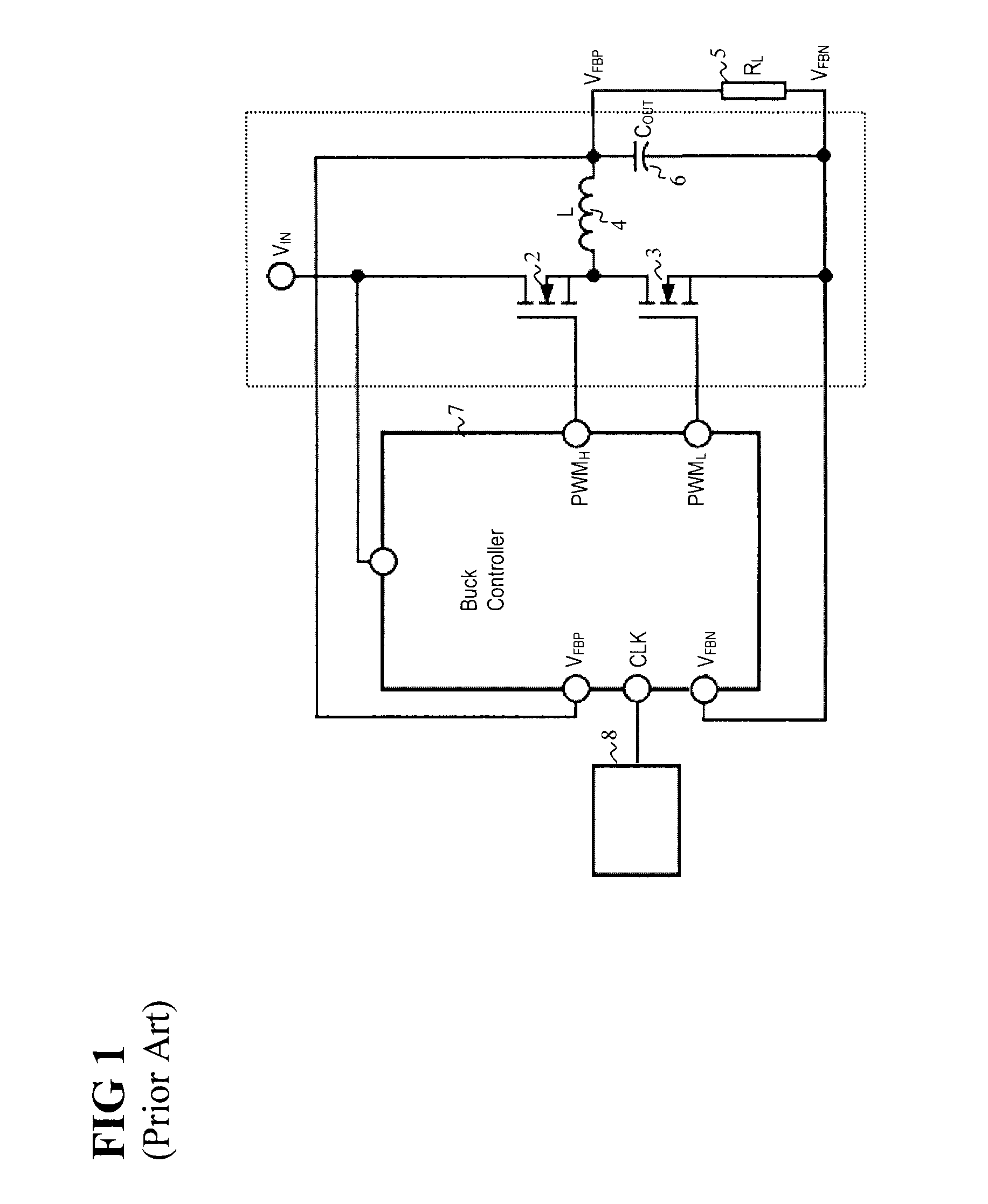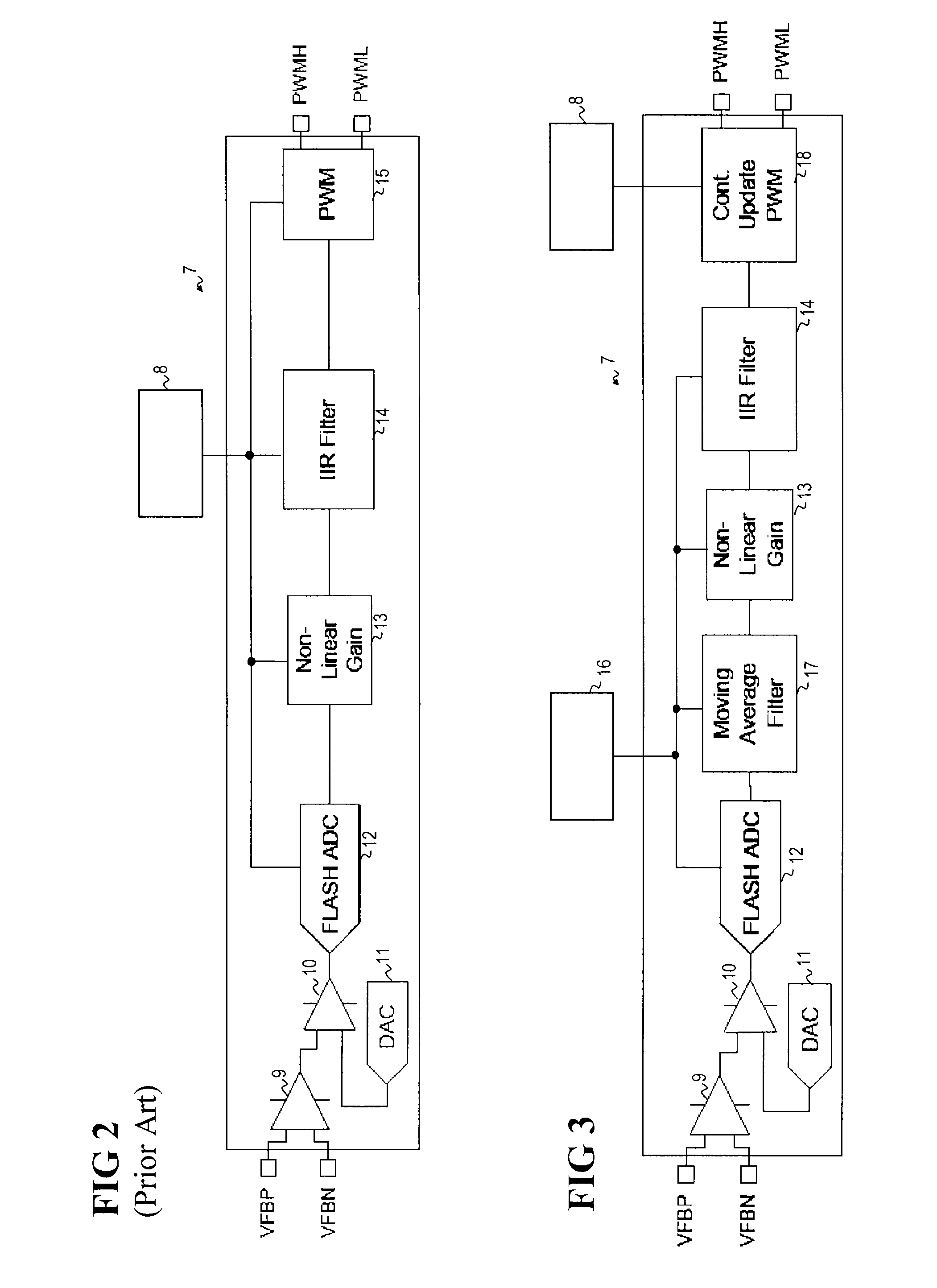Method for the closed-loop control of a buck converter and arrangement for implementing the method
a buck converter and closed-loop control technology, applied in the direction of electric variable regulation, power conversion systems, instruments, etc., can solve the problems of control overshooting and high sluggishness, and achieve the effect of reducing the valu
- Summary
- Abstract
- Description
- Claims
- Application Information
AI Technical Summary
Benefits of technology
Problems solved by technology
Method used
Image
Examples
Embodiment Construction
[0034]As shown in FIG. 1, in a buck converter 1 two switching transistors 2 and 3 are provided, each respectively switching alternating. Both transistors 2 and 3 are connected with their source-drain path in a current circuit between the input voltage VIN and the ground. An inductor 4 is connected therebetween, which is switched serially with a load resistor 5, over which the output voltage VFBP−VFBN drops. Parallel in reference to the load resistor a capacitor 6 is switched.
[0035]During the period the first transistor 2 is switched on, namely the one located at the side of the input voltage, a load current flows through the inductivity 4 and through the load resistor 5. The second transistor 3 is blocked. During the period the first transistor 2 is switched off, the second transistor 3 is switched on. Now the energy stored in the inductor 4 is drained. The current flows through the load 5, however now through the second transistor 3 and out of the capacitor 6.
[0036]By modifying the...
PUM
 Login to View More
Login to View More Abstract
Description
Claims
Application Information
 Login to View More
Login to View More - R&D
- Intellectual Property
- Life Sciences
- Materials
- Tech Scout
- Unparalleled Data Quality
- Higher Quality Content
- 60% Fewer Hallucinations
Browse by: Latest US Patents, China's latest patents, Technical Efficacy Thesaurus, Application Domain, Technology Topic, Popular Technical Reports.
© 2025 PatSnap. All rights reserved.Legal|Privacy policy|Modern Slavery Act Transparency Statement|Sitemap|About US| Contact US: help@patsnap.com



